Artists in Residence
The Schusterman Center hosts Israeli artists from the visual, literary, and performing arts who illuminate the contemporary cultural environment in Israel and bring it to vivid life here at Brandeis.
Artists in Residence receive non-paid appointments at the Schusterman Center while working on their own research and projects relevant to Israel Studies. Artists in Residence become part of our Israel Studies community and are invited to lectures and events at the Center, and at Brandeis University in general. We strongly prefer that Artists in Residence join us for a minimum of at least one semester.
Artists in Residence are also given library access, parking, visa support, and a designated workspace at the Center, if needed. Scholars must make their own housing arrangements, and are responsible for paying for their own living costs (housing, food, transportation, etc.), as well as medical insurance.
If you are interested in becoming an Artist in Residence at the Schusterman Center for Israel Studies, please complete this online form. We look forward to getting to know you!
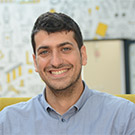
Ran Bechor is an educator, award-winning Hebrew playwright and theater director. In 2016, Bechor was awarded first place at the Akko Fringe Theater Festival for his play “Schreber.” He is a former fellow of the Mandel School for Educational Leadership, where he conducted research on the connection between high art and education. He spent two years as the principal of a school for the gifted in Jerusalem. Drawing on his deep knowledge of the subject, he currently teaches Hebrew language and culture at Harvard University. In 2023, he co-founded Adam Theater in Boston, MA, and serves as the artistic director of the theater today.
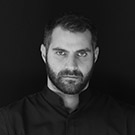
Amichai Chasson is an Israeli poet, writer, curator, and filmmaker. He has published three poetry collections, receiving the Israeli Ministry of Culture Award for Literature, the First Lady of Israel Award for Hebrew Poetry, and the Prime Minister's Prize for Hebrew Literary Works. He has written and directed TV series and documentaries. Chasson holds degrees from the Sam Spiegel Film and Television School and the Mandel Institute for Leadership. He has been a research fellow at the Van Leer Jerusalem Institute and a member of the Israeli Film Council. He served as a speechwriter for President Rivlin and worked as a columnist and critic for Yedioth Ahronoth, and as a broadcaster for Kan. Currently, he is the artistic director of Beit Avi Chai and the chief curator of its gallery in Jerusalem. At the Schusterman Center, he will connect contemporary Hebrew poetry with modern Israeli art.

Stav Marin is a choreographer, dancer, and performer based in Jaffa, Israel. Marin has been recognized with the prestigious Ministry of Culture Award. She served as the artistic director of the Intimadance Festival in Tel Aviv and has worked on numerous dance and theater productions globally. Marin has collaborated with various international choreographers, dance companies, and artists. Her recent work, "Tsena Urena," premiered at the Curtains Up Festival in 2022. Marin is a lecturer at Tufts University's Theatre, Dance, and Performance Department. At the Schusterman Center, Marin will develop her work on the boundaries between verbal, oral, and body language, focusing on the dynamics of gender and subject formation in and through Hebrew. This work will analyze portrayals and notions of the female body in Hebrew contexts and investigate the specificity of the connections between body, voice, and text.
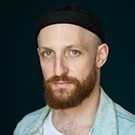
Neta Weiner is an artist and social activist based in Jaffa, Israel. He is the founder and lead singer of the Jewish-Arab project System Ali and the artistic director of the Beit System Ali social educational movement. Weiner has created and acted in several critically acclaimed and award-winning stage works produced for festivals and significant theaters worldwide. Last year, Weiner released his second solo album, "Pinui Binui," written in Hebrew, Arabic, Yiddish, and English. Weiner is a lecturer at Tufts University's Theatre, Dance, and Performance Department. At the Schusterman Center, Weiner will develop his work in deconstructing and reconstructing language through multiple artistic mediums, including music, spoken word, dance, martial arts, and theatre. He will focus on the power of performance to feed the imagination and to create socio-political transformation and collaboration.
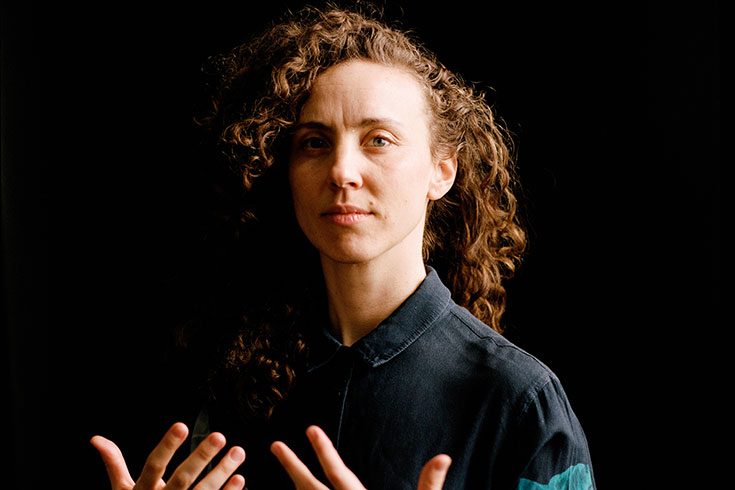
Photo Credit: Maria Baranova
Hadar Ahuvia is a dance artist and educator drawing on the multidisciplinary lineages of postmodern dance and the Ashkenazi Jewish diaspora. She creates performances, workshops, and rituals that forefront the role of the body in political, social and spiritual action. Raised as a secular Zionist in Israel/Palestine and US/Turtle Island, Ahuvia has come to study traditional prayer texts and melodies as a way of healing intergenerational ruptures. Her years-long research and deconstruction of Zionist folk dance have culminated in a cycle of performances tracing how Israeli identity is choreographed and transmitted, a contribution to the "Oxford Handbook of Jewishness and Dance," and earned her a Bessie nomination for Outstanding Breakout Choreographer. Her choreographic credits include Baryshnikov Arts Center, Danspace Project, 14th St Y, Gibney Dance, La Mama, and Movement Research. As a performer, she has had the honor of dancing with Sara Rudner, Reggie Wilson/ Fist and Heel Performance Group, Trisha Brown and Lucinda Child’s Dance, and co-creating and collaborating with Shira Eviatar and Tatyana Tenenbaum.
Ahuvia has shared her research at the Association for Jewish Studies, Arizona State University, University of Maryland, City College, Whitman College, and Yale University. She is a rabbinical student at Hebrew College and is delighted to be in the community at Brandeis this year. She will be sharing her Deconstructing Israeli Folk Dance workshop, a collaboration with choreographer Rebecca Pappas, and a new work emerging from her reclamation of Eastern European Ashkenazi vernacular and cantorial music called "Nefesh".
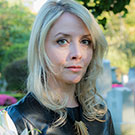
Chantal Ringuet is an award-winning Canadian author, scholar and translator. She is the author of "Un pays où la terre se fragmente. Carnets de Jérusalem [Jerusalem Notebooks]" (Linda Leith Publishing, 2017), a collection of essays on Israeli culture and literature. She is currently working on a book project about Modern Israeli writers (in French), and on a literary project about the involvement of the American Colony Industrial School of Jerusalem in the Palestinian lace tradition in the 1930s.
Dr. Ringuet has written collections of poems (2009 Jacques-Poirier literary award) and works on Yiddish Montreal. With Gérard Rabinovitch, she has published "Les révolutions de Leonard Cohen" (Presses de l’Université du Québec, 2016), which received a 2017 Canadian Jewish Literary Award. With Pierre Anctil, she has published a translation of the original biography of Marc Chagall, "Eygens" (Mon univers. Autobiographies, Fides, 2017). She has been a Fellow of the YIVO Institute for Jewish Research in New York, Scholar in Residence at the Hadassah-Brandeis Institute, Writer in Residence and Literary Translator in Residence at the Banff Centre for Arts and Creativity.
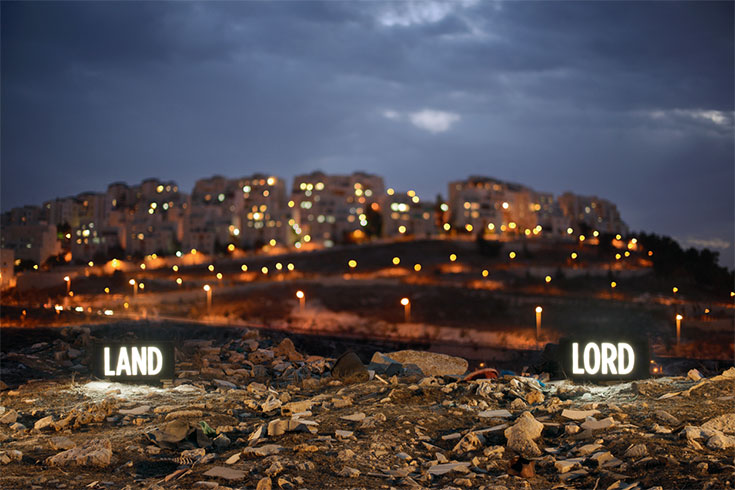
Shimon Attie returned to Brandeis for a residency that engaged questions of memory, place and identity. His artwork, recognized with a Guggenheim Fellowship and the Rome Prize, gives visual form to personal and collective memories, histories of marginalized and forgotten communities, and physical landscape.
Artist talks took place February 26 & 27 and March 26. Learn more about the residency.
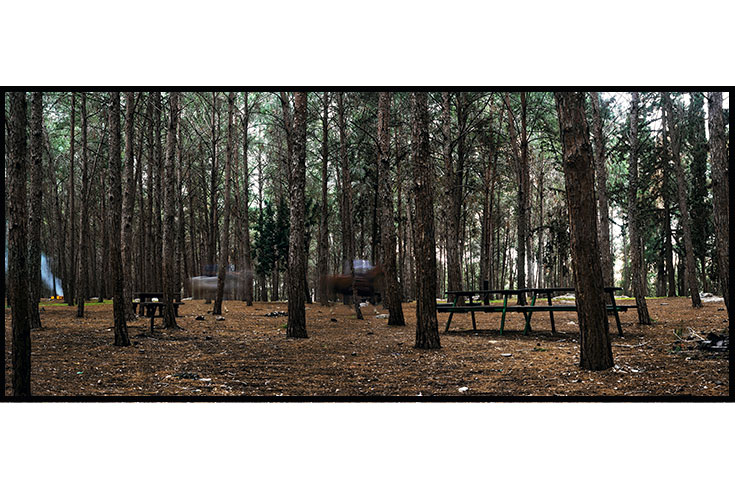
100 Steps to the Mediterranean, a solo exhibition of photography and video installations by one of the most compelling emerging artists in the Middle East opened at The Rose Art Museum on September 20 through December 9. An illustrated catalog was launched on October 30 at the Rose in conjunction with a public talk by the artist. Academic programs on campus included workshops on social justice and a panel discussion, “Exposures: Photography and the Politics of Looking," on October 31. Learn more about the artist.
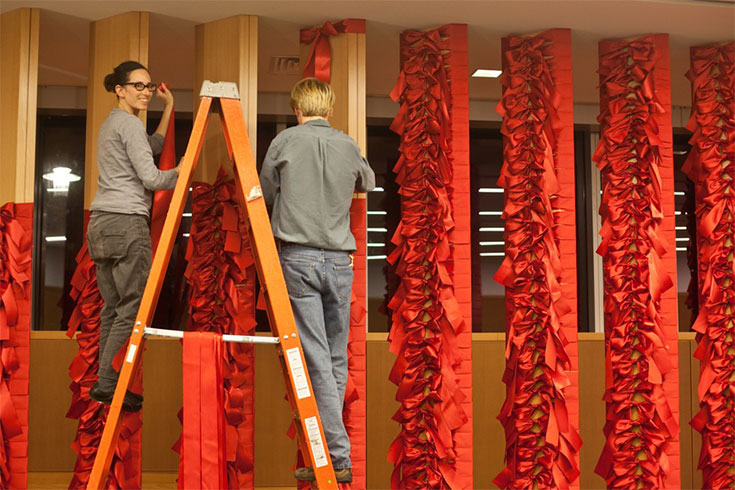
In honor of the Center dedication on November 10, 2010, and assisted by Brandeis students, Nelly created a symbolic performative installation composed entirely of red satin ribbons. This work offered an artistic alternative to the traditional "cutting of the ribbon" ceremony, as well as a celebratory gesture of gratitude for the gift of art. Additional works by Agassi, along with a selection of contemporary Israeli photography and video art, are on display at the Center.
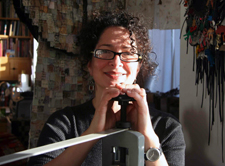
Co-sponsored with Hadassah-Brandeis Institute, Israeli/American artist Andi Arnovitz arrived at Brandeis in February 2010 to address our doctoral students on the dissonance between halacha (Jewish law) and modernity. She created a studio art workshop on using textiles in journaling with HBI students. Based on research and interactions with the university community, Arnovitz will make sketches of coats that honor such women as Deborah the prophetess, Dona Gracia Nasi, Naomi Shemer, and Ruth Bader Ginsburg. She will use these sketches to create three-dimensional versions upon her return to Israel.